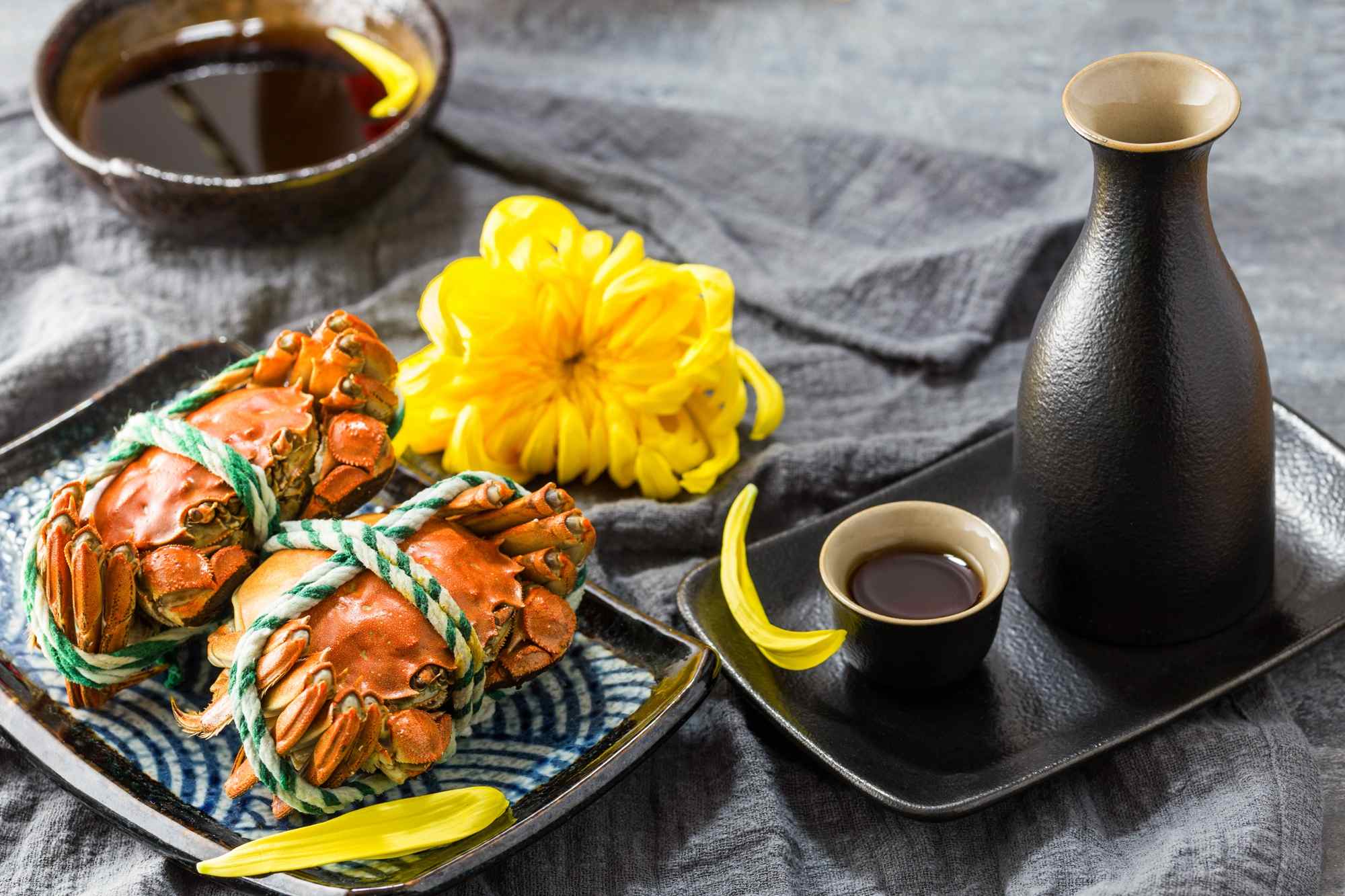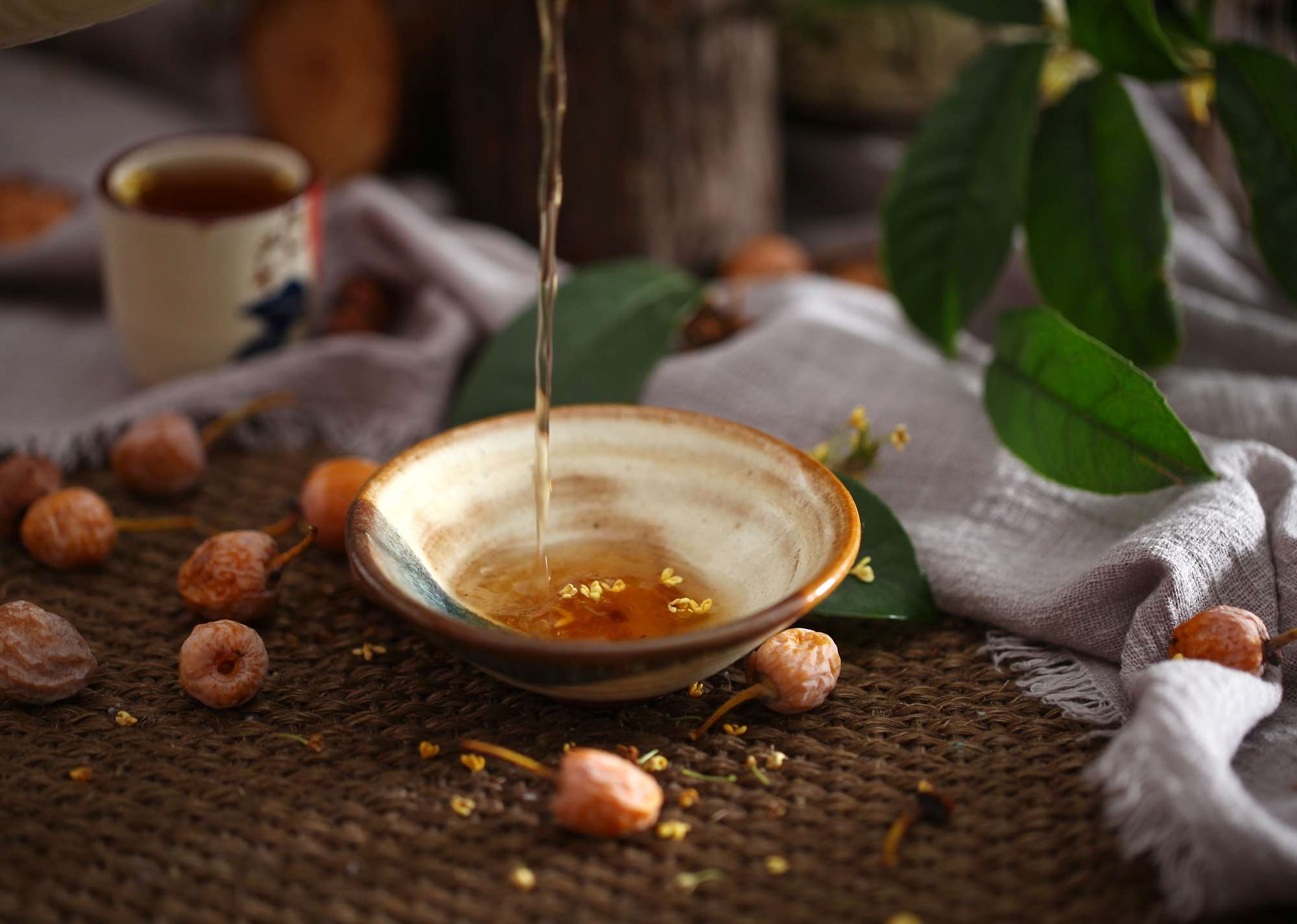
From the People's Daily app.
And this is Story in the Story.
China can lay claim to being home to one of the world's three major ancient alcoholic drinks, together with beer and wine.
Huangjiu, known as "yellow rice wine," is a type of Chinese liquor made from cereal grains such as rice, wheat or millet. It has a brewing history of more than 2,500 years.
Unlike Baijiu, Huangjiu is not distilled; the alcohol content by volume is no more than 20 percent, which is suitable for daily drinking.
Huangjiu is produced in many regions across China, offering a wide range of options for consumers. Shaoxing City in east China's Zhejiang Province, where Huangjiu is mainly produced, is the most famous Chinese region for making yellow rice wine.
The yellow rice wine is a pillar industry in Shaoxing City, where 74 rice wine companies and more than 11,000 workers produce more than 600,000 tons of rice wine every year.
Today's Story in the Story looks at the origins of this Chinese wine and how it is becoming more well-known both at home and abroad.

A bottle of Huangjiu with a plate of crab. (Photo: VCG)
According to Chinese legend, huangjiu was invented by Du Kang, the god of Chinese alcohol.
The most famous variety hails from Shaoxing, originally due to the pure water of Mirror Lake that was used to make the wine.
The brewing technique of Shaoxing yellow rice wine was listed as a National Intangible Cultural Heritage in 2006, which means Shaoxing Huangjiu is not only a traditional alcoholic drink in China but also a significant part of the national culture.
The most authentic way to keep the best aroma of Huangjiu is to age it in earthenware jars for decades. The longer it is aged, the better flavor it will be.
With Huangjiu brewers now seeking new markets, Huangjiu is often mixed with soda or juices, and chilled with ice cubes as a kind of refreshing low-alcohol cocktail.
To warm the yellow wine, the traditional method is to pour Huangjiu into a bottle and put it in hot water instead of heating it directly.
Noted as one of the official state gifts between China and foreign countries, the Shaoxing Yellow Rice Wine has often turned up at dinner feasts and been used to toast friendships between two countries.
For example, when Chinese President Xi Jinping visited the US in September 2015, Shaoxing Huangjiu was set on the menu for the state dinner at the White House.
Today in addition to being a kind of alcoholic drink on the market, Huangjiu now is also used in cooking to replace the function of Liaojiu, an essential condiment in Chinese cooking.

A glass of Huangjiu. (Photo: VCG)
Chinese Huangjiu is also the mean feature at the Yellow Wine Museum of China.
Situated in the Yuecheng District of Shaoxing City, the Yellow Wine Museum of China features Chinese Huangjiu culture and the production of Huangjiu.
There are three main halls in the museum and the highlight of it is a wine cellar, which covers an area of 400 square meters and stores many kinds of aged wines.
To better serve visitors who want to learn more about the great culture of Huangjiu, a series of special activities including the identification of Huangjiu and the Huangjiu show performance have been held by the museum.
Today, China's Huangjiu museum is regarded as the "golden name card" for Shaoxing City. For those who are planning to visit Shaoxing City, the Yellow Wine Museum of China is a must-try.
Yuanhong – or “Champion’s Red” – is named for the earthenware jars that the wine is aged in.
Traditionally in Shaoxing, new parents will buy a jar of this huangjiu and bury it when their child is born, to be dug up to celebrate achievements in the child’s life, like getting married or graduating from school.
In China, alcohol is more than just a drink. It is the most popular gift, an important element in a reunion meal for friends or family, and a symbolic part in many ceremonies, be they to celebrate a new apprenticeship, marriage, or an oath of loyalty.
Some of the finest poems, literature and calligraphy were created while under the influence, and there are even dances and martial arts intended to be performed in this heightened state.
(Produced by Nancy Yan Xu, Brian Lowe, Lance Crayon, Chelle Wenqian Zeng. Music by: bensound.com. Text from CGTN.)


